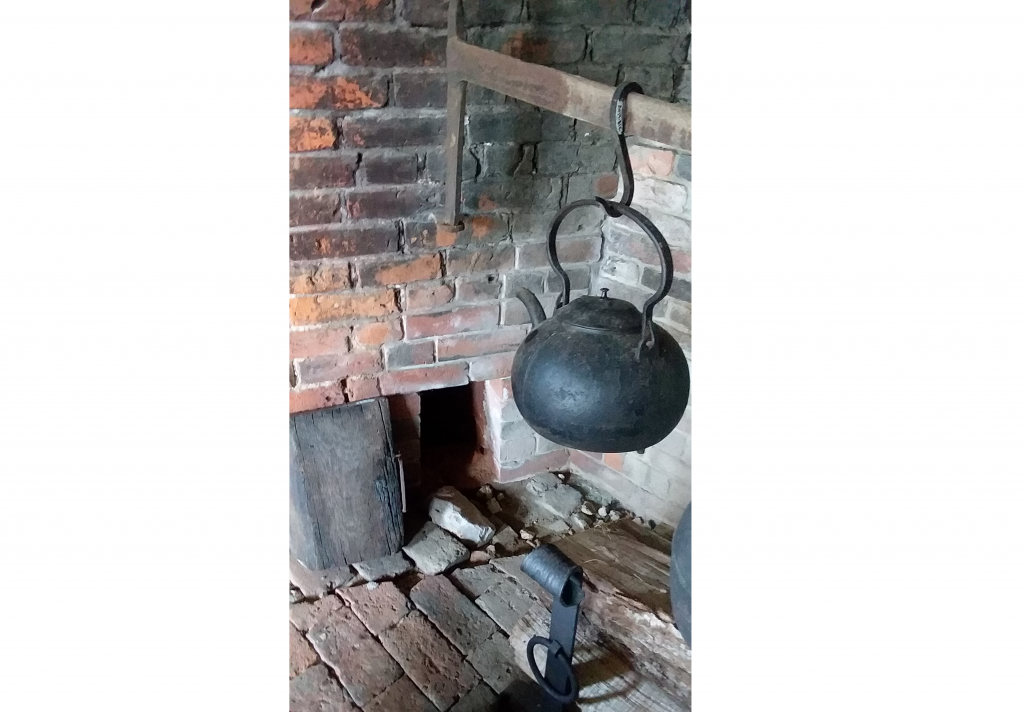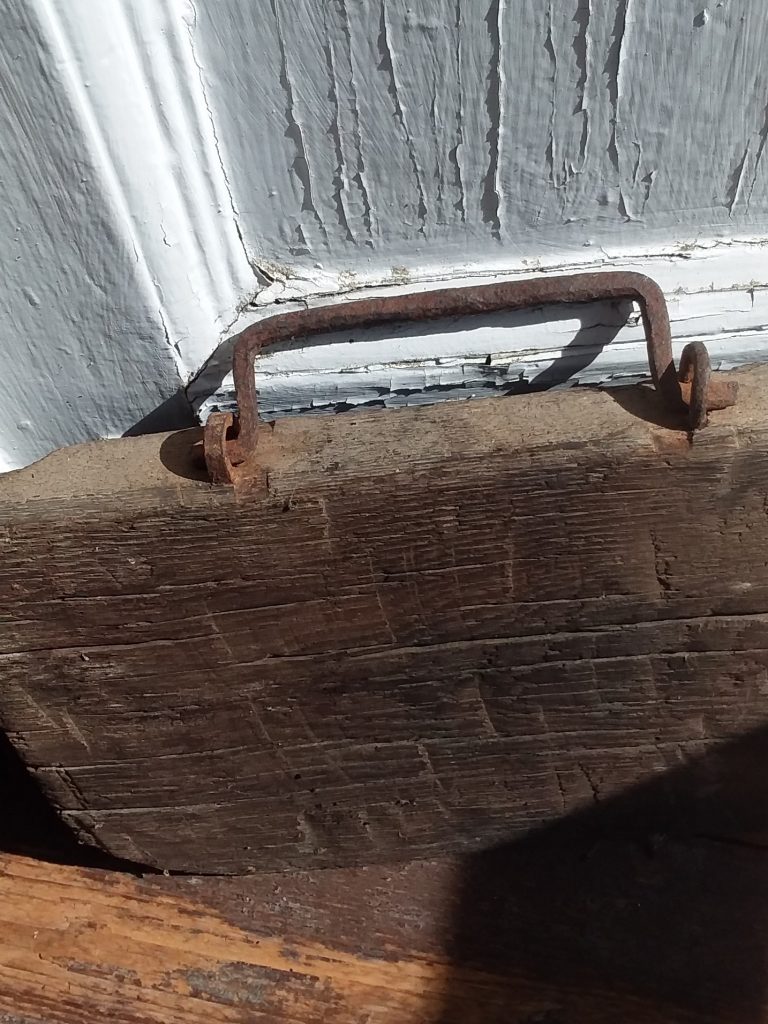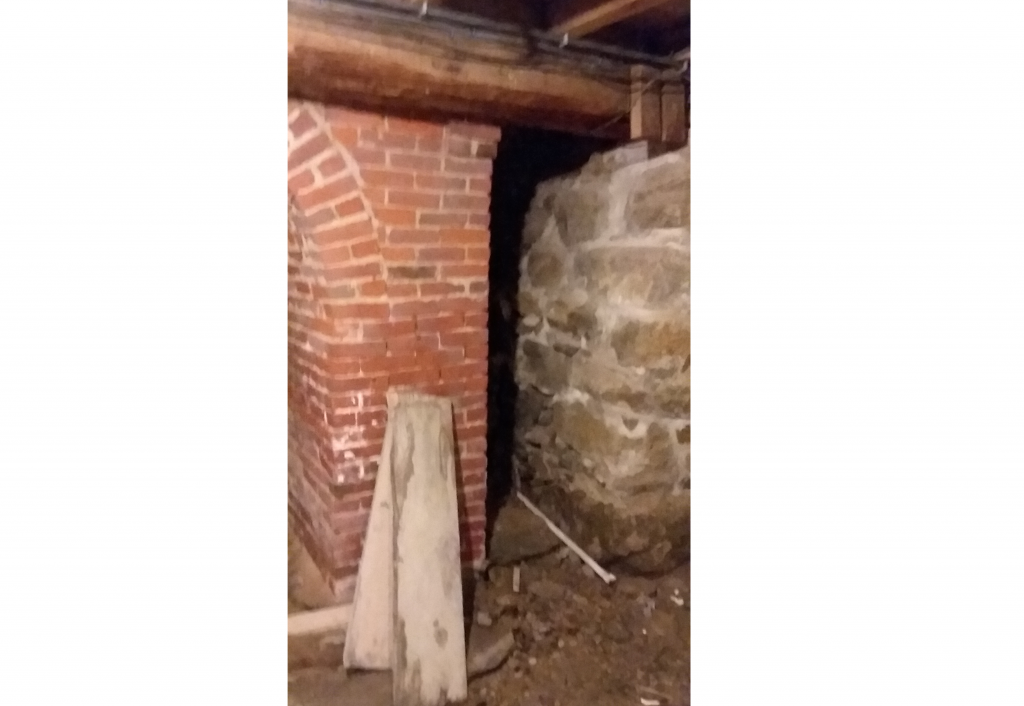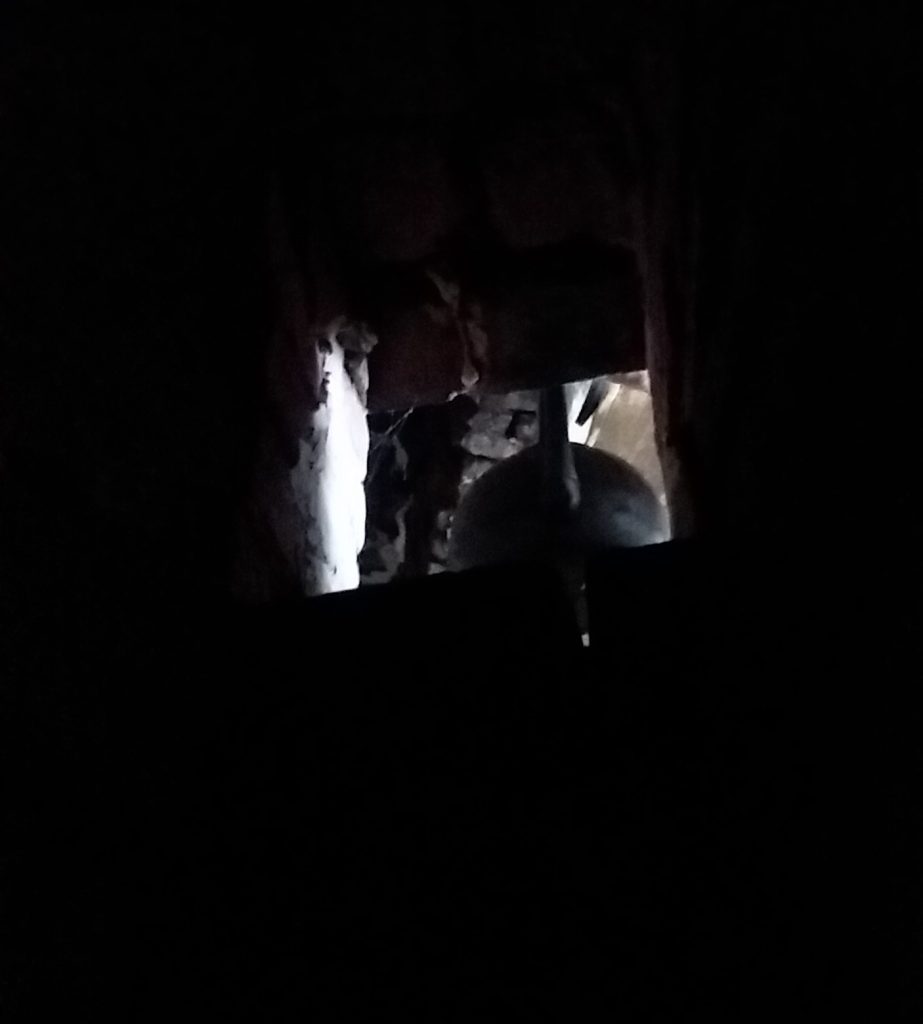Ash Hole – Every house should have had one!
Several years ago, while a mason was repairing one of the huge chimneys at the Pownalborough Court House, which accommodates six fireplaces, he remarked on this small hole in the bottom left angle of the cooking fireplace in the original kitchen, saying that it was clever of them to be sure to always have a draft for the fire. In our huge, uninsulated, high-ceilinged, large-windowed, clapboard building, I had to tell him there was no need for more drafts! But it was interesting watching a modern mind make sense of an 18th Century feature.
The small hole was for ashes—the ash hole. It was a necessary feature for a frontier house to have.

Each morning, the little covering would be removed from the hole and the cold ashes from the previous day’s cooking would be shoveled down the hole, into a barrel standing in the cellar.

To properly cook on the hearth, you only use hardwood—which makes good coals that hold their heat and are used more than flame in cooking—and thus have a consistent quality of ash. Saved all winter in barrels in the cellar the ashes are the source of lye, which is made by passing water through the ashes. Lye is one half of the requirement to make soap. The other half is saved fat, of whatever kind was available after cooking. It too was saved in barrels in the cellar. The resulting soap was not pretty—kind of goopy and grey—but it did the job!
We are amazingly lucky to have what we believe is the original door that covered and still does cover the hole opening, with its original wrought iron handle and staples holding it on, showing charring from being in the fireplace. It fits the little opening perfectly, even though years ago it was propped in the beehive oven, as though it were part of it.
The two pictures below show the hole from the cellar. The outlet of the hole is the narrow space between the brick base of the chimney and the stone wall of the cellar, just wide enough to take a barrel. The last photo looks up into the fireplace from where the barrel would have stood.


Perry Palmer, LCHA Collections Committee

 Newsletter
Newsletter Join LCHA
Join LCHA Donate Now
Donate Now